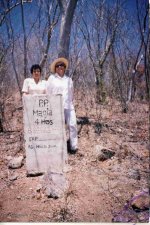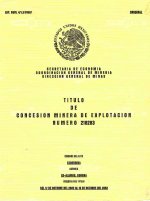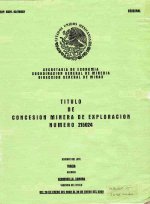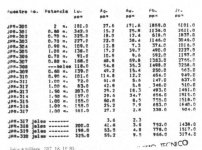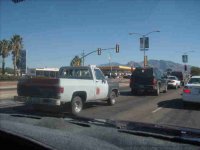Old Bookaroo
Silver Member
- Dec 4, 2008
- 4,318
- 3,510
THE LOST DUTCH-OVEN MINE.
from The Miner’s Guide; A Ready Handbook for the Prospector and Miner, by Horace J. West (Los Angeles: Second Edition — 1925)
When the railroads built their transcontinental systems, some of their greatest difficulties lay in the supply of water for the men who were working on the projects. Great wagon-trains were frequently essential to bring sufficient of the supply to make work for a week at a time possible. Even after the completion of the roads there was difficulty in obtaining water for the purpose of supplying the engines or the little stations necessary wherever there was a siding.
In order to secure water in abundance, the Santa Fe Railroad had ordered a tunnel bored in the Clipper Range, located in San Bernardino County from eight to ten miles northwest of Danby, the station to which it was to be piped if discovered in great quantity. This all happened within a score of years. The man who volunteered for the work, a competent mining man, who was well acquainted with the sinking of shafts and the boring of tunnels, was Thomas Schofield of Los Angeles.
Tiring of work one day in early June of 1894, he started on a prospecting trip, something which he did whenever he felt in need of relaxation. He wandered into one of the canyons close at hand and discovered there a spring. What to him was more surprising and even startling was the trail that led up the canyon, stopping at the watering-place.
The trail, at times very indistinct because of the solid rock formation, led over three or four small hills, the hog-back of two ranges and then into another canyon. This he followed until it ended in a blank wall and he realized that the trail had been lost. Going back a short distance he discovered it winding up the side of the hill. It led to two immense rocks, rivaling the towers of an old English castle. They seemed to form the portal to the wealth beyond, and nature had set them so closely together that they allowed just sufficient passageway to permit a burro well packed to enter.
And just beyond the portal stood an isolated rock. There beside the black boulder of enormous size stood the shreds of what had been a camp. The wooden upright supports were still standing, and draped from them, floating in the breeze, were the shreds of what had been a tent. Brush had been carefully piled up around the sides. Inside there was a bench of boughs, still covered with a blanket, which was, like the tent covering, dilapidated and ragged. The stillness of the place and the fact that man had been making his habitation there struck Schofield like a blow from a fist.
A pile of railroad ties, a number of rusty old axes which had been used as wedges for splitting the ties for lagging, a few other mining tools and some badly decomposed food still lay about the place, indicating very sudden abandonment of the camp by its owner. The most conspicuous of all things about the place was an old-fashioned, heavily rusted Dutch oven, the largest Schofield had ever seen and a trifle over two feet in diameter. So oppressive was the place and so nerve-racking the immediate strain, that he continued on the trail which led away from the camp.
Just a short distance away he came to a shaft where considerable work had been done. It was sunk upon a series of small stringers that ran parallel to one another for a long distance and at intervals of about six inches. He counted twelve of these peculiar formations in the rock and they were of almost solid gold! He tested them, “horning” great strings of coarse gold.
The surrounding ore was of an indigo-blue quartz formation, and “to me the stringers, passing through the dark porphyry, appeared a bed of roses of golden hues hidden in the depths of a giant bed of violets,” said Schofield in telling of his discovery. “I traced these lines of high-grade ore for a distance of nearly three thousand feet, and found them widening and enlarging as they went. They interested me so that I failed to notice for hours that the day was fast waning and that I would be forced to remain there over-night.
“The mystery, the awe and even the fear of that night I shall never forget. Was I in the haunt of a robber crew who had found wealth far richer than could be obtained from their nefarious trade in the city? Had the owners been cruelly murdered and their wealth carried off by some one else? Was I the victim of some strange phantasmagoria, or would I waken to find all the wealth and the adventure of the day a dream? These and countless other suggestions coursed through my throbbing brain, and I slept little that night.
“In the morning I explored the shaft at the first light of breaking sun above the jagged sky-line of broken peaks. I found that the shaft had been sunk to possibly seventy or eighty feet, and it was equipped with a windless, rope and bucket and that it had been well timbered all the way to the bottom. Outside I discovered a large pile of ore, indicative of the fact that little or none of the product of the mine had ever been carried away.
“After gathering a number of fine samples and a large quantity of the horned gold, I went back to the camp and there again I was attracted by the Dutch oven. Something seemed to draw me to it. It contained gold! Half of it was full of the product and there was I unable to cart it away. All marks of those who resided there were of such an old stamp that I never thought whether it would be right or wrong. The idea of possession of so much wealth nearly overwhelmed me, and after grasping some of it I started back to the camp by the tunnel, planning a trip to Los Angeles to see whether it was really gold that I had found.”
And when Schofield has his ore and his metal tested he found that it was the real article and that he had made himself richer by several hundred [1894] dollars with just the small amount he had been able to lug out on his person. It fired him with the desire to return at once and obtain all of the treasure if the right owners had not returned. But he has never been able to get back to the Dutch oven!
In coming back from the mine he had paid little heed to the general direction taken. He had followed the trail blindly on his way up and again on his return journey. Consequently after a number of weeks, when he returned with a partner to look for the treasure and found that some terrific rains and even a waterspout had been ahead of him, his plans became hazy. The water had obliterated all signs of a trail and his knowledge of getting back was gone with it. He had forgotten the general direction, and in the years that have followed he has never been able to discover the towers of rock, the solitary mass of granite where the camp stood, or the mouth of the tunnel and the ore-heap that lay before it.
He told friends and they in turn told others of the wonderful Dutch oven. In the annuals of mining, no one has ever heard of a wonderfully rich discovery in the Clipper Range. There are no mining men who speak of the place knowingly as having worked it or worked with those who had worked it. The camp remains a mystery, and were it not for the wealth the Schofield brought back with him, his story might never have gained the credence that it has. He is still living [1921-1925], and tells with great enthusiasm the manner of his discovery, but puts on the soft pedal when it comes to his loss. The gold would have meant so much in the worldly goods and his family’s comforts at this time.
A Brief Glossary
“Horning:” A miner’s horn spoon is a cow (or, back in the day, perhaps a buffalo) horn cut lengthwise and scraped thin. It is used to separate gold from the surrounding material. “The horn spoon is preferable to the gold pan or batea for prospecting, as being more convenient to carry (it can go in a pocket) and in use requires very little water, and does not fatigue the user by causing prolonged stooping.” - Prospecting, Locating and Valuing Mines, by R.H. Stretch, E.M. (New York: 1899; Second Edition 1900), page 165.
Porphyry: An igneous rock in which relatively large, conspicuous crystals are set in a finer grained or glassy ground mass. Porphyries are generally named in accordance with their rock composition (for example, granite porphyry). The word porphyry is used by miners to mean almost any kind of igneous rocks, particularly one that is spotted, soft or light colored. The Miner’s Guide, page 73.
Stringers: Small veins of ore often leading to larger and, consequently, more valuable veins (provided they are followed in the correct direction, of course). Not to be confused with the “stringers” that are structural pieces of mine tunnel framing. That is not the way the word is used in Mr. West’s account.
Further Reading
This may well be the wildest (the least likely to be true) of all Mr. West’s stories. Beginning with Thomas Probert’s Lost Mines and Buried Treasures of the West (Berkeley, California: 1977) we find just over a page of possible sources. These include the usual suspects: Jack Black, Howard D. Clark, John D. Mitchell, Thomas Penfield, et. al. And a series of lesser-known treasure writers. Few of these books, pamphlets and articles are likely to add anything new to this tale, however. One could spend quite some time locating a copy of Robert G. Ferguson’s rare little pamphlet Camp Fire Tales of Lost Mines and Hidden Treasures (Privately printed by the Author: Tucson, Arizona — 1937) only to read a version of this story straight out of The Miner’s Guide.
Roger L. Wood’s article “Tales of Lost Gold” (The Treasure Hunter, Vol. 5, No. 6: July-August 1970) provides a brief version of the story that concludes with “It wasn’t until 1963 when 3 men from Utah, Joe Rambo, Ray Rambo, and Earl Dewitt, all of Salt Lake City found the long sought after mine a little north of Danby. Unfortunately the remaining ore in the mine wasn’t worth mining at the cost of miners wages and the low price of gold.”
The most interesting references are to back issues of Hosstail Joe Small’s True West and Frontier Times. Happily, much of this material was reprinted in the more readily available GOLD! Magazines. For example, Walter H. Miller’s interview with Tom Scofield (that’s how his name is spelt in the article) may be found in Volume 1, No. 1 of GOLD! (Annual, 1969). Apparently another interview with that gentleman was the basis for Rexford Bellamy’s October, 1941 article in Desert Magazine. He spelled the name “Schofield.”
The two best items, however, are letters to the Editor reprinted in GOLD! (Summer 1971; Vol. 3, No. 3) in a regular column titled “Pieces of Eight.” The first was submitted by the wonderfully named “Horse Face” Lassiter of Wise, Kansas, in response to an article written by Chick Oldham (“The Lost Dutch Oven Mine,” Frontier Times, Vol. 33, No. 4 — Fall 1959). Mr. Lassiter said the story was fiction created by Tom Scofield and sold to a newspaper for $50 ("A $50.00 Hoax"). And that Mr. Scofield confessed to the hoax to West Coast newspapers in [19]’45.
The second letter "Treasure Hunters Attention") was written by Charles Millen, following up on Horse Face’s epistle. The most pertinent sentence is “He (Tom Scofield) confided in Bill [“Hardrock” Hammond] and Karl [von Mueller] that the Dutch Oven was a figment of his imagination dreamed up during an interview with a ‘smart aleck’ reporter from the Los Angeles Times.” Mr. Millen goes on at some length about the successful treasure hunting exploits of KvonM.
Karl von Mueller’s Encyclopedia of Buried Treasure Hunting (The Blue Book of Treasure Hunting) (San Francisco: 1990) says about the Lost Dutch Oven: “There are dozens of versions of this lost mine yarn.” He spells the protagonist’s name “Schofield,” by the way. In an interesting note, KvonM wrote “There is an actual Dutch Oven Mine in the Old Woman Mtns. SE of Danby…” In light of Mr. Millen’s letter, his insertion of the word “actual” is instructive. He cites the “LA Times, numerous articles,” as one of his sources, along with the October 1941 Desert Magazine article noted above.
One final note. Who is Charles Millen? We return to KvonM’s EBTH and find “Millen, Charles G.: A lifetime pursuer of buried treasure and mineral wealth. He has endowed numerous charities with the fruits of his successes.”
to be continued…Next: Lost Mines of Death Valley — The Breyffogle.
--- o0o ---
This is Part V of the Lost Mines of the Desert series. Part I was posted here on December 26, 2008. Part II — “The Lost Arch” Diggings was posted January 3, 2009. Part III — The Peg-Leg Mine; Or, the God of Fury’s Black Gold Nuggets, was posted January 11, 2009, and may be found under the Lost Peg Leg Mine topic. Part IV — The Lost Papuan Diggings — was posted January 19, 2009.
Once this series has been completed, I am considering collecting all these stories into a booklet for ready reference and convenient reading. If you would like to be notified when that is done, please send me a PM.
= 30 =
Last edited:






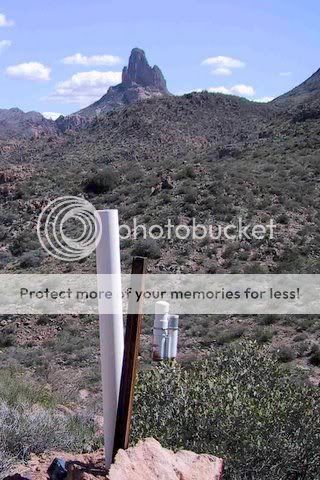

 (Maybe one or two degrees Farh. warmer, due to latitude?)
(Maybe one or two degrees Farh. warmer, due to latitude?) 